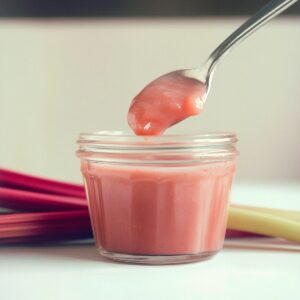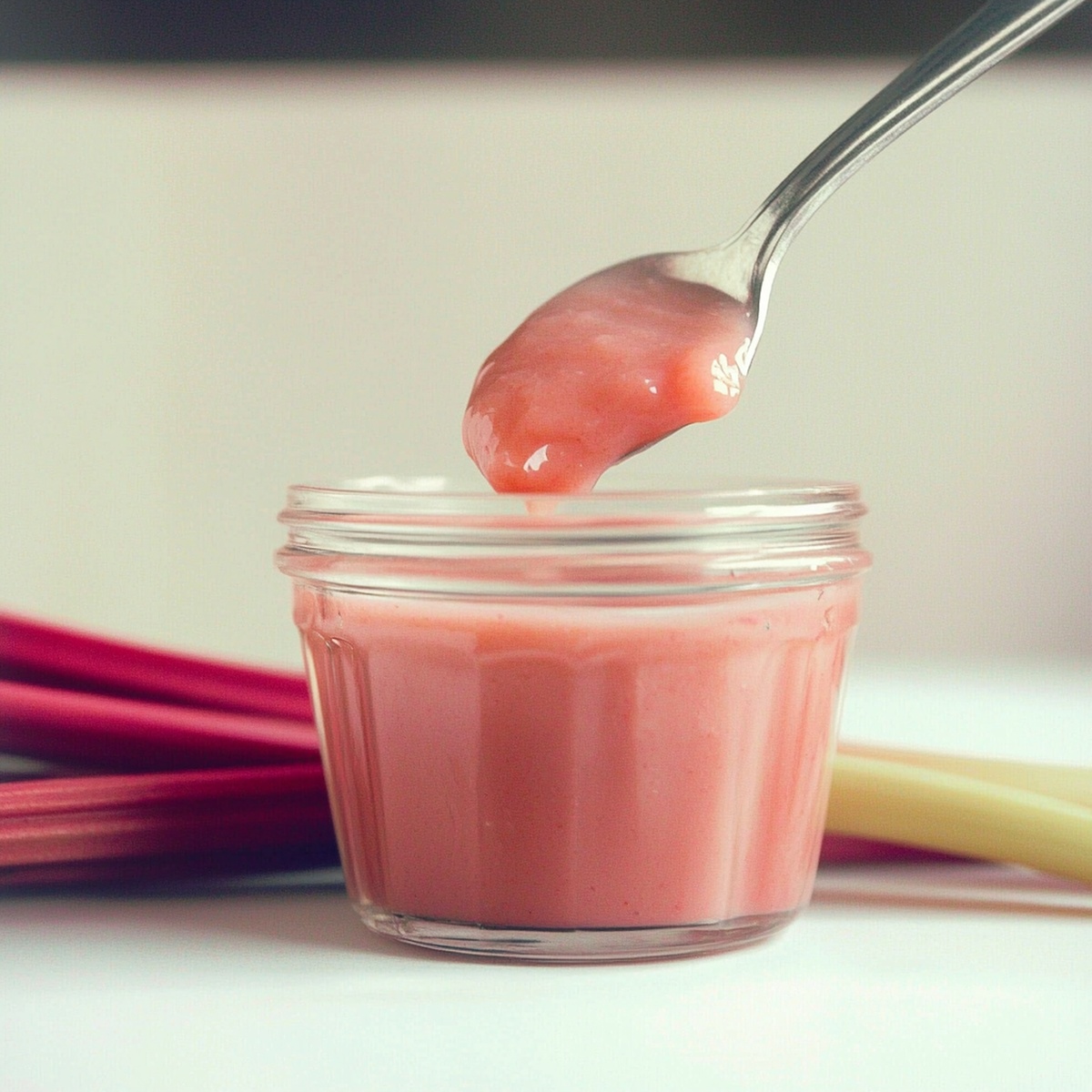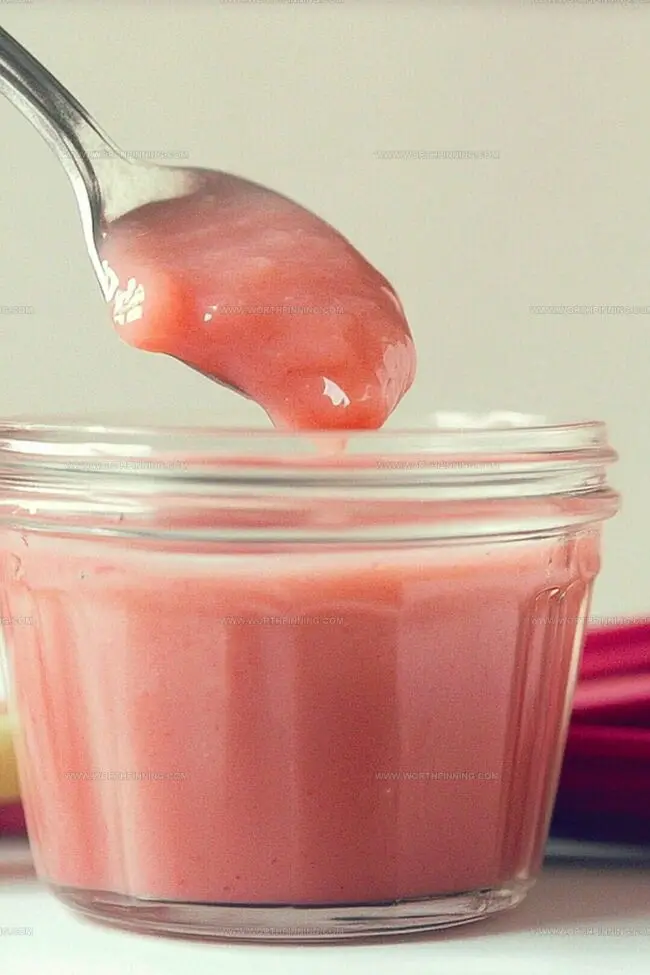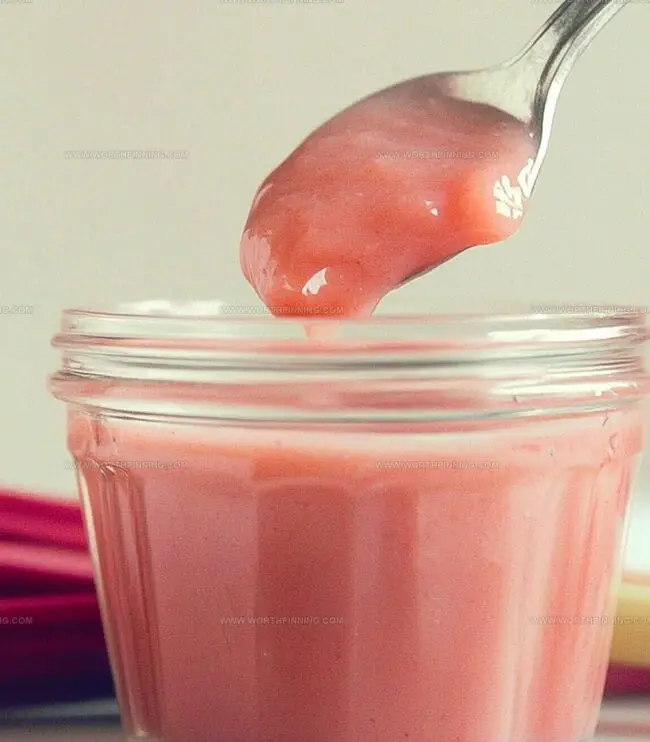Silky Homemade Rhubarb Curd Recipe for Zesty Spring Treats
Creamy rhubarb curd brings a burst of tangy sweetness to your spring dessert lineup.
Local farmers’ markets overflow with vibrant stalks during peak season.
Tart pink stems promise an unexpectedly delightful culinary adventure waiting to unfold.
Kitchen experiments can yield magical results when you trust simple ingredients.
Smooth, silky textures emerge from carefully balanced proportions of eggs, sugar, and rhubarb.
Whisking transforms humble produce into a luxurious spread perfect for toast or pastry filling.
Each spoonful delivers a playful balance between bright acidity and gentle sweetness.
You’ll want to savor this recipe from the first delectable bite.
Rhubarb Curd Makes Every Spoonful Count
Ingredients That Brighten Up Rhubarb Curd
Main Ingredients:
Fruit Base:Binding Ingredients:Flavor Enhancers:Finishing Ingredients:How to Cook Rhubarb Curd from Scratch
Step 1: Soften Rhubarb
Toss rhubarb chunks into a saucepan with water. Heat gently over medium flame, letting the rhubarb transform into a tender, mushy mixture. Stir occasionally and cook for 8-10 minutes until completely broken down.
Step 2: Create Smooth Puree
Transfer cooked rhubarb to a blender. Pulse until silky smooth. Pour through a fine-mesh strainer to eliminate any stringy fibers, collecting about one cup of vibrant puree.
Step 3: Combine Curd Ingredients
In a clean saucepan, whisk together:Step 4: Cook Curd Mixture
Place pan over medium-low heat. Stir constantly and gently. Watch as the mixture gradually thickens and becomes glossy. Continue cooking 6-8 minutes until the curd coats the back of a wooden spoon.
Step 5: Incorporate Butter
Remove pan from heat. Drop in butter pieces and stir until completely melted and incorporated, creating a luxurious, silky texture.
Step 6: Store Curd
Pour curd into a clean jar or bowl. Press plastic wrap directly onto the surface to prevent skin formation. Refrigerate for minimum two hours before serving.
Step 7: Enjoy and Preserve
Savor your homemade rhubarb curd within one week. Perfect as a spread, dessert topping, or standalone treat.
Rhubarb Curd Tips for Smooth Results
How to Store and Serve Rhubarb Curd Well
Pairing Ideas for Luscious Rhubarb Curd
Flavor Variations on Rhubarb Curd You’ll Love
FAQs That Help Master Rhubarb Curd
A tangy, creamy spread made from rhubarb puree, eggs, sugar, and butter that’s similar to lemon curd but with a unique rhubarb flavor profile.
Yes, the eggs are fully cooked during the curd-making process, which safely reaches temperatures that eliminate any potential bacteria.
Absolutely! Frozen rhubarb works perfectly. Just thaw and drain excess liquid before cooking to maintain the right consistency.
Straining removes tough rhubarb fibers, ensuring a smooth, silky texture in the final curd that’s pleasant to spread and eat.
Print
Rhubarb Curd Recipe
- Total Time: 30 minutes
- Yield: 8 1x
Description
Silky rhubarb curd brings spring’s tangy elegance to dessert tables with its luscious pink hue. Creamy, smooth, and perfectly balanced, this delightful spread invites you to savor sweet-tart magic on scones, cakes, or directly from the spoon.
Ingredients
Main Ingredients:
- 2 cups (480 ml) chopped fresh rhubarb
- 2 large egg yolks
- 1 large egg
- ⅔ cup (133 g) granulated sugar
Liquid and Acidic Components:
- ¼ cup (60 ml) water
- 1 tablespoon (15 ml) lemon juice
Finishing Ingredients:
- 4 tablespoons (56 g) unsalted butter, cut into pieces
- 1 pinch of salt
Instructions
- Simmer rhubarb with water in a saucepan, gently breaking down the stalks until they transform into a soft, pulpy mixture, approximately 8-10 minutes.
- Puree the cooked rhubarb thoroughly, then strain through a fine-mesh sieve to extract a silky, fiber-free liquid.
- Combine rhubarb puree with sugar, egg yolks, whole egg, lemon juice, and salt in a clean saucepan, whisking to create a uniform mixture.
- Cook the mixture over medium-low heat, continuously stirring to prevent scorching, until the liquid thickens and achieves a custard-like consistency that smoothly coats the back of a wooden spoon.
- Remove from heat and incorporate butter pieces, stirring until they melt completely and integrate seamlessly into the curd.
- Transfer the smooth curd to a clean jar or bowl, then carefully lay plastic wrap directly on the surface to prevent skin formation during cooling.
- Refrigerate for a minimum of 2 hours to allow the curd to set and develop its rich, tangy flavor profile, which will remain fresh for up to one week when stored properly.
Notes
- Experiment with different sweetness levels by adjusting sugar quantity to match the tartness of your rhubarb.
- Use fresh, bright pink rhubarb stalks for the most vibrant color and flavor in your curd.
- Strain the puree thoroughly to ensure a silky smooth texture without stringy fibers.
- Consider using a digital thermometer to monitor the curd’s temperature, aiming for 170°F to prevent egg scrambling while ensuring proper thickening.
- Prep Time: 10 minutes
- Cook Time: 20 minutes
- Category: Desserts, Snacks
- Method: Simmering
- Cuisine: British
Nutrition
- Serving Size: 8
- Calories: 0 kcal
- Sugar: 0 g
- Sodium: 0 mg
- Fat: 0 g
- Saturated Fat: 0 g
- Unsaturated Fat: 0 g
- Trans Fat: 0 g
- Carbohydrates: 0 g
- Fiber: 0 g
- Protein: 0 g
- Cholesterol: 0 mg




Ethan Miller
Founder & Lead Content Writer
Expertise
Education
Portland Community College
Culinary Institute of the Pacific
Ethan’s culinary journey began in his grandmother’s kitchen, where he first learned to play with flavors and ingredients. With formal training in culinary arts and a deep love for international cuisines, Ethan’s goal is to share the joy of cooking with others.
He believes food is all about creativity and bringing people together, one meal at a time. When he’s not experimenting with new dishes, he enjoys hiking in the Oregon wilderness and discovering fresh, local ingredients.